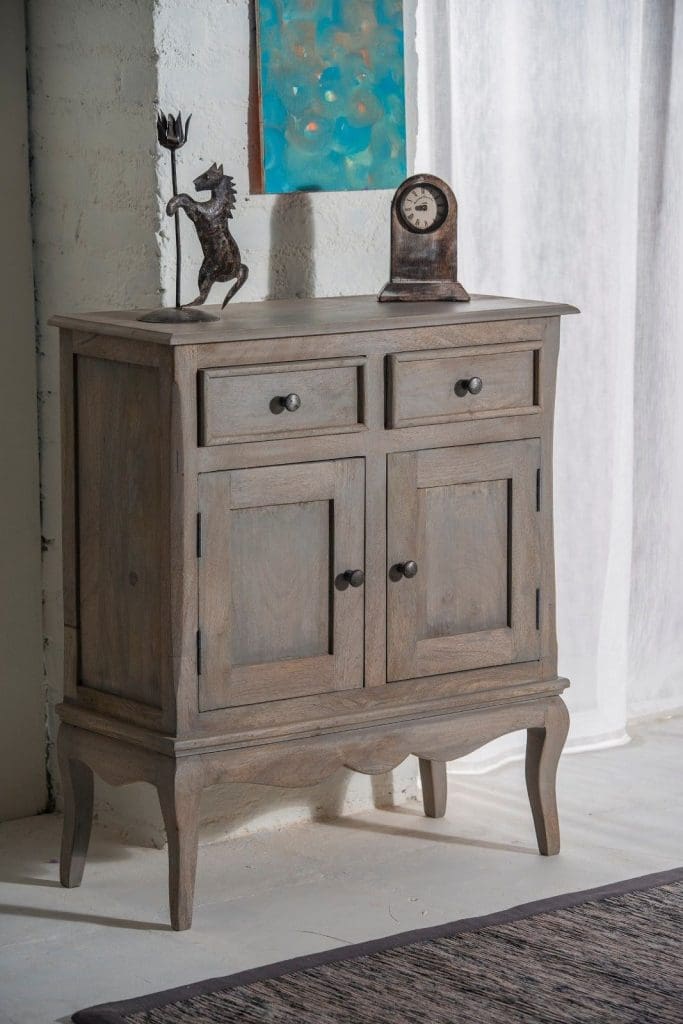No products in the basket.
Mango Furniture
Why Mango Wood has Become the Choice for Sustainable Producers
The search for the best materials to work with is a never-ending pursuit and certainly nothing that climate change has created, but it is an area which has shifted in its focus significantly in recent years, largely as a response to the challenges brought about by the crisis. The holy grail of building and furniture materials may never be found, but if we are responsible and careful in our use of what the planet provides, there is clear evidence to suggest that sustainable use of wood is possible, and – if the alternatives are dependent on the production of plastics and other petrochemicals – preferable.
So, much has been written about the benefits of the industry’s heavyweights – the oaks and the pines and the like – but what about mango wood? Where does that fit in on the spectrum of ecological credentials? As it turns out: pretty high. Read on to find out why.
Mango Trees: a Quick Guide
Okay, so this bit doesn’t strictly have to do with why the tree is being chosen for its wood, but it’s useful information nevertheless.
Mangifera indica – or mango as it is commonly known – is a species in the family Anacardiaceae, which also includes cashew, pistachio and poison ivy. There are 2 distinct genetic populations in modern mangoes: the ‘Indian type’ and the ‘Southeast Asian type’.
The wild mango is believed to have originated in the foothills of the Himalayas in India and Myanmar; the first cultivation of the fruit dates back 5,000 years in India, Myanmar and the Andaman Islands.
Such is its popularity; it is now being grown in large areas across the world, from China to Mexico, Kenya and Brazil – and plenty of places in between. Handy, then, that such a populous tree also happens to be so highly prized for its wood.
So, now that we know a little about the family, we can go into why it’s fast becoming one of the sustainable producer’s materials of choice.
Carbon Capture
As with any tree, mangoes spend their days absorbing carbon from the atmosphere and storing it in their bodies. When we cut them down and make things from them, the carbon doesn’t get released into the air as long as it still has a use, so each plank is a tiny carbon bank, doing its bit for the climate effort. Better than the pollutants caused by the production of plastics and the scarring on the earth from our extraction of stone, most would agree.
Material as By-product
One of the things you wouldn’t need to be told about a mango tree is that its primary appeal for us humans is the delicious tropical fruit it yields. The tree has become one of the crops of choice in climates that are suitable; the reasons for this are multiple and can be explained through the cycle of an individual in the industry.
Planted from seed, a mango will take 5 to 8 years to bear fruit and 10 to 15 to reach full productivity. Unfortunately, however, these peak years don’t last – a good tree might remain in production for 40 years – and as the tree matures its production of fruit begins to decline. When this happens, the old trees are felled and new ones planted so that the farmers can maintain maximum productivity from their crop.
This leaves a lot of waste wood, and mango wood has the curious if not unique characteristic of being the by-product of another industry – something which would have been felled regardless of our interest in it as a material. This means that it’s not only efficient in its growth time – an oak would take 75 years to reach maturity, by comparison – but also that it is in and of itself contributing to another cornerstone of the sustainability movement: the concept of zero waste.
The Price
These aspects of the tree’s sustainability credentials also have the pleasing effect of keeping the cost down, meaning that it tends to be more affordable than its hardwood competitors. As long as the world keeps enjoying the fruit, the need for a high turnover of the crop will proceed and the availability of it as a material won’t come under the same pressures as those in other timber industries.
Another feature to bear in mind with regards to the price of the wood is post-production treatment. Once the tree has been felled, there is minimal processing required as compared to similar woods and so doesn’t incur the same price-tag along the way.
The Grain
Surprisingly, perhaps, considering the convenience of its use and the rapidity of its growth, mango wood has become well known as much for its aesthetics as it has its quality and versatility as a material. An intricate, distinctive texture and pattern to the grain combines with a varied palette in the flesh tone to produce a thing that is guaranteed to be one-of-its-kind, the very zenith of bespoke.
Longevity
Despite its classification as being one of the softer hardwoods, it is still considered exceptionally durable when used in furniture making. It has a strength profile comparable to ash and oak whilst being soft enough to be a lot easier on the tools used to craft the wood into its eventual shape. It doesn’t wear out easily, is very good at moisture resistance and ages attractively, making it a top contender for any furniture that is made to last.
Utility
Mango wood is not only flexible in its capacity to be bent into shape – far more forgiving than some of its competitors – it also enjoys a lustre that makes it a good backdrop to any stain or paint applied to it, either pre-market or later on by the consumer. This means that mango wood is a popular go-to material for upcycling ideas. So, the furniture made from it now may be just one incarnation of the wood throughout its lifetime.
Once, Twice, Three Times a Wise Choice
The world would be a much better place if, like the mango tree, today’s waste could be more routinely turned into tomorrow’s commodity. As is so often the case, we could all do with taking a leaf from the arboreal book.

